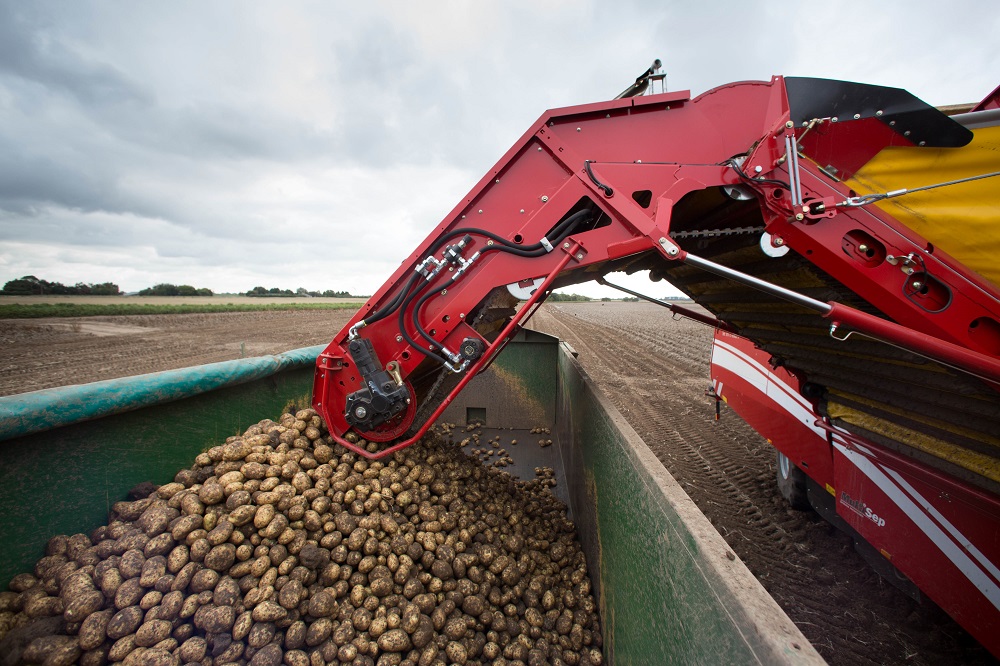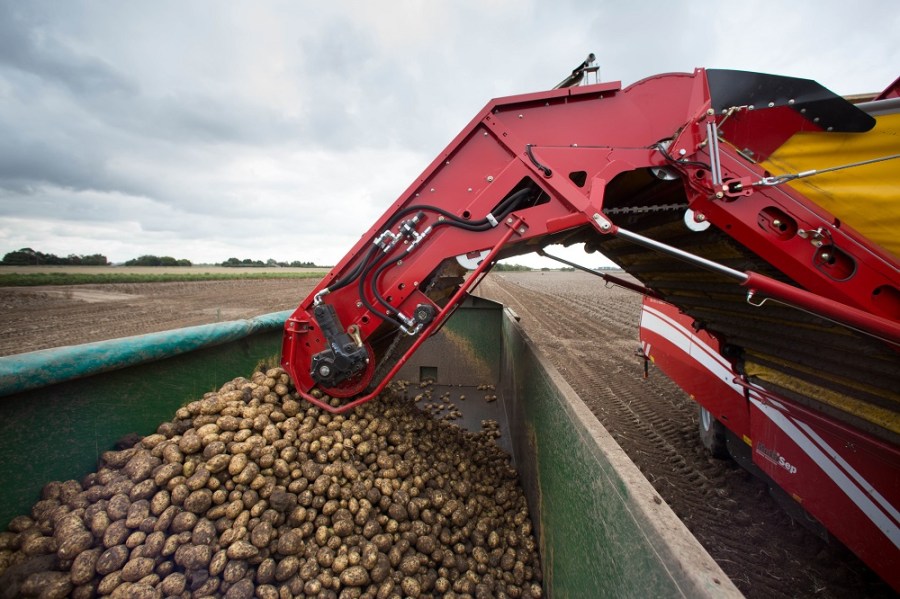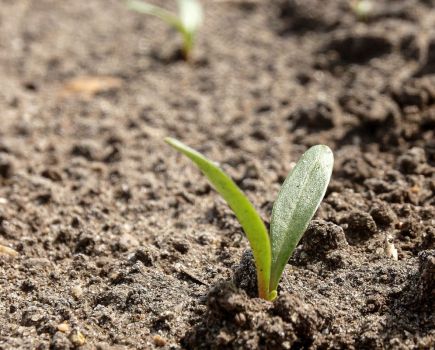
Although improving tuber calcium levels improves quality, growers often get little benefit from application of calcium fertilisers. CPM gets an expert view on why.
Calcium only moves upwards. This is why targeting and correct placement of applications is so important.
By Lucy de la Pasture
It’s widely known that having good calcium levels in potato tubers can reduce multiple quality problems including Internal Rust Spot (IRS), internal browning and hollow heart. Calcium also plays a role in reducing susceptibility to bruising and post-harvest diseases.
So what exactly do plants do with calcium? Its main function within cell walls is to give cell wall rigidity & strength, explains David Marks, research fellow at Lancaster University and managing director of Levity CropScience.
“The main symptom of calcium deficiency is the disintegration of cell walls and the collapse of affected tissues. It’s this tissue collapse that contributes to IRS, internal browning, and premature rotting and bruising post-harvest,” he says.
Potatoes don’t actually need very much calcium, the quality problems associated with calcium result from tiny localised deficiencies, he says. But these minor deficiencies (in terms of the portion of tissue affected) can make crops unsellable.
“While tubers may have small areas of calcium deficiency, the rest of the plant rarely suffers any shortage at all and is often precipitating Ca out from leaves as an excess,” explains David Marks.
For example, if a 35t/ha crop of potatoes had complete loss due to internal rust spot, the actual quantity of Ca-deficient tissue (2% of each tuber is actually affected) is only 700kg/ha. The difference between the affected and healthy part of the potato is typically only 4mg/kg.
“Therefore the amount of calcium required to prevent an entire 35/ha tonne crop of potato from having internal browning is only 2.8g/ha. This should raise a few questions for growers,” he says.
“Why are small parts of the tuber deficient when the area right next to them isn’t? Why are these small areas of tissue deficient in Ca when there’s no whole plant deficiency and why doesn’t applying large amounts of calcium reverse the deficiency?”
In order to answer these questions, it’s important to understand how calcium behaves in a plant, he says. There are two factors to be considered in plant Ca availability – transport and absorption.
“Unlike most other mineral nutrients, Ca isn’t phloem mobile and can only be transported through the xylem. Ca enters the plant with water and is transported upwards with transpiration, where it’s either absorbed and stored, or is

Quality problems associated with calcium can make crops unsellable, says David Marks, but result from tiny localised deficiencies.
precipitated from the leaves as excess,” explains David Marks.
“Ca only moves upwards. Nobody has ever witnessed or discovered a way to change this. This is why targeting and correct placement of applications is so important – Ca applied to leaves can’t correct problems in the roots. Therefore, foliar sprays of Ca fertilisers will never put the nutrient into tuber – it’s physiological impossible for the plant to move down,” he stresses.
“Ca is absorbed into cells using polar-auxin transport – as auxin moves out of the cell, Ca enters. Parts of a plant that are low in auxin can’t absorb the nutrient effectively, regardless of how much is available.”
High auxin-producing areas include new shoots, new flowers, and new leaves. Low auxin-producing areas include fruits, roots and tubers.
“This is why applying Ca to correct physiological disorders can be so ineffective. It doesn’t matter how much is applied, parts of the plant with low auxin levels such as tubers can’t absorb it properly,” he says.
So how can we improve tuber Ca levels? Part of the answer is targeting the tuber zone, believes David Marks. “Don’t apply it to foliage and expect it to get to tubers. For best results it must be placed near the stolon roots inside the tuber zone.
“Use Ca in an available form, and don’t confuse it with liming agents. It’s easy to think Ca status will be improved where liming agents are used to adjust pH, where in reality they supply very little (the Ca in lime is only 1 in 10,000 available).
“Time applications to when tubers can absorb it. Tubers produce very little auxin once they start growing, so to get conventional Ca sources into a tuber it really needs to be done during the cell division stage. Once tubers reach 5mm in size there’s very little new cell formation, and auxin levels decline. For Ca to be able to get in the tuber it needs to be available between hook eye and 5mm tuber size,” advises David Marks.
Finally, he advises growers to use more advanced Ca products that have been shown in field trials to lift in-tuber calcium levels.




